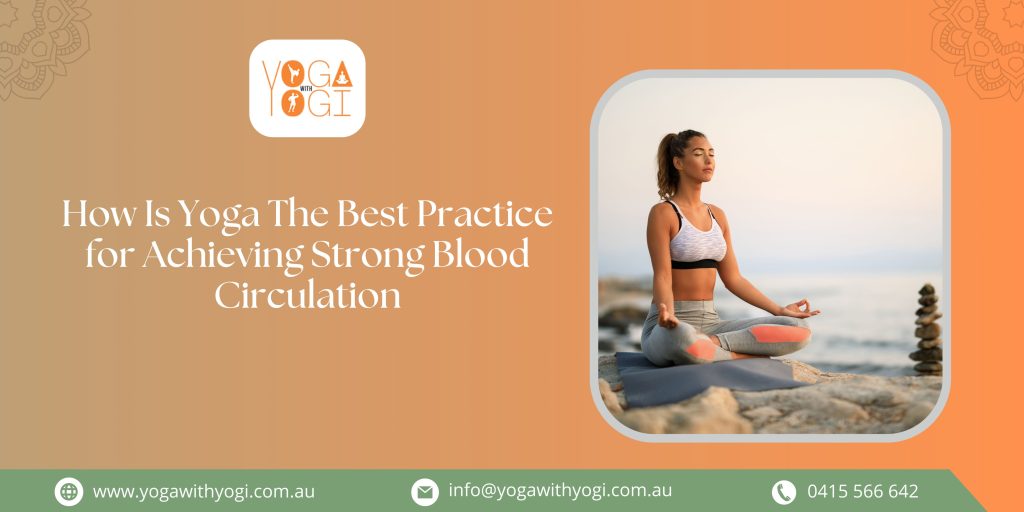Yoga is basically a spiritual practice that aims to achieve harmony between the mind and body through a very subtle science. Leading a healthy life is both an art and a science. From the Sanskrit root “Yuj,” which means “to join,” “to yoke,” or “to unite,” comes the word “yoga.” According to Yogic teachings, practicing yoga results in the unification of one’s own consciousness with that of the universe, signifying complete harmony between the mind and body, as well as between man and nature. Yoga can be done at home from online yoga classes as it has many benefits.
One of the major benefits of yoga is increasing blood circulation in the body and we will discuss this in detail in this article.
The circulatory system
The heart is where the oxygenated blood from the lungs returns to travel throughout the body. The heart, blood veins, and blood itself make up the circulatory system, which functions nonstop to provide nutrients to each and every cell in the body. Additionally, the blood aids in cell waste removal and repair processes. A robust heartbeat, healthy blood vessels, and a regular workout regimen are necessary for the blood to flow through the blood vessels with strength.
Difference between Yoga and other forms of exercise
A daily exercise routine might consist of three yoga sessions per week and three cardio workouts, such as lengthy walks, jogging, aerobics, or playing an active sport, depending on one’s age and physical level. All types of exercise will strengthen our heart and maintain a smooth and strong blood flow via the blood vessel network, but yoga offers some advantages over other types of physical activity.
Robust workouts in systems of exercise such as sports and aerobics cause blood to shoot down our limbs; nevertheless, because the heart is beating quickly and the exercise is ongoing, the blood that has lost oxygen can return to the heart from the lower extremities. However, people lose their ability to perform intense aerobic exercises as they age. In yoga, we gently perform inversions such as the shoulder stand (sarvanghasana), which allows us to use gravity to our advantage and return deoxygenated blood to the heart from the lower legs and feet.
Sports and Yoga in blood circulation
Running is one of the repetitious activities found in sports. This works out particular muscle groups, but yoga offers a wide variety of movements, including bends—many of them both forward and backward—various twists, inversions, and postures are done standing on one’s feet, on one’s hands and knees, just on the knees, lying supine on one’s back, and from a prone position on one’s abdomen. Hence, yoga gives the body a thorough upgrade and guarantees a powerful blood surge to every area of the body. Regular yoga practice helps to cure numerous problems without the need for medicine.
Yoga practices that help blood circulation
There are certain yoga positions that can increase circulation which are taught in online yoga classes Australia. Legs-up-the-wall inversions or shoulder stands will encourage venous return and aid blood flow from the extremities back to the heart. Seated spinal twists, on the other hand, will stimulate the abdominal organs, enhance digestion, and help to improve overall circulatory health. Ultimately, practicing downward-facing dogs will send blood rushing down our limbs.
Yoga incorporates key practices such as conscious breathing techniques like Ujjayi breathing, Kapalabhati, and Alternate Nostril Breathing, which serve to enhance blood oxygenation and quiet the mind. We can boost oxygen intake to support cardiovascular function, improve circulation, and foster general vigor by practicing deep yogic breathing.





